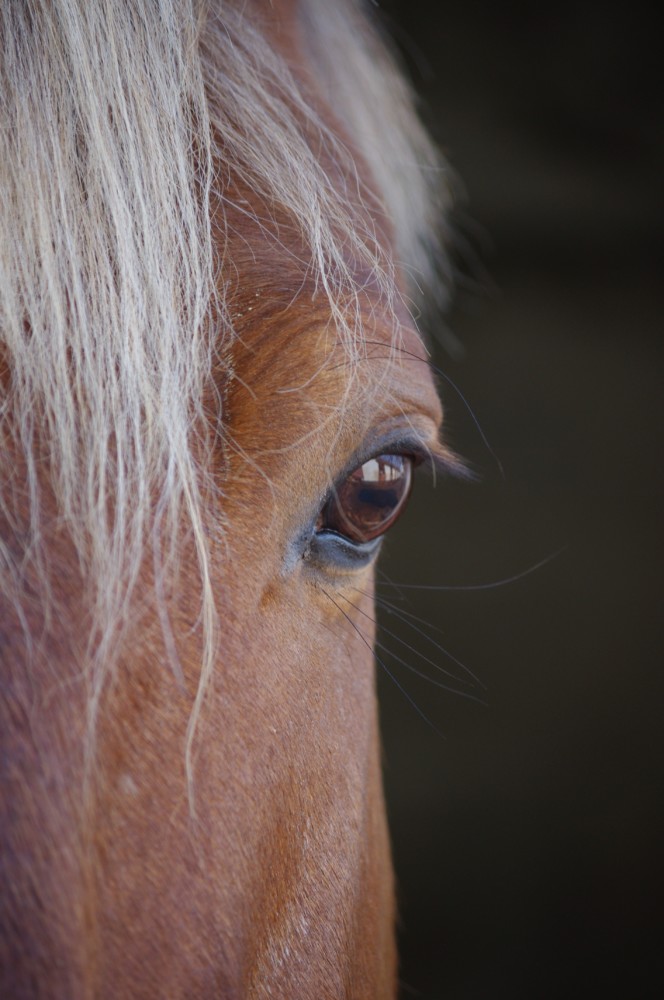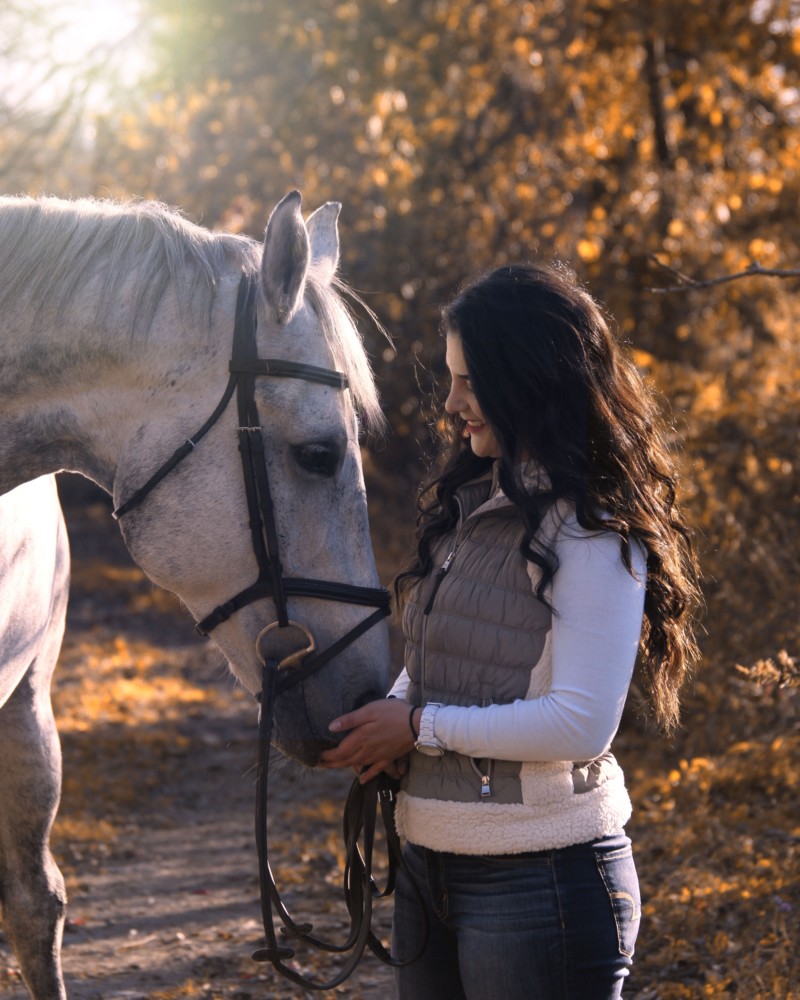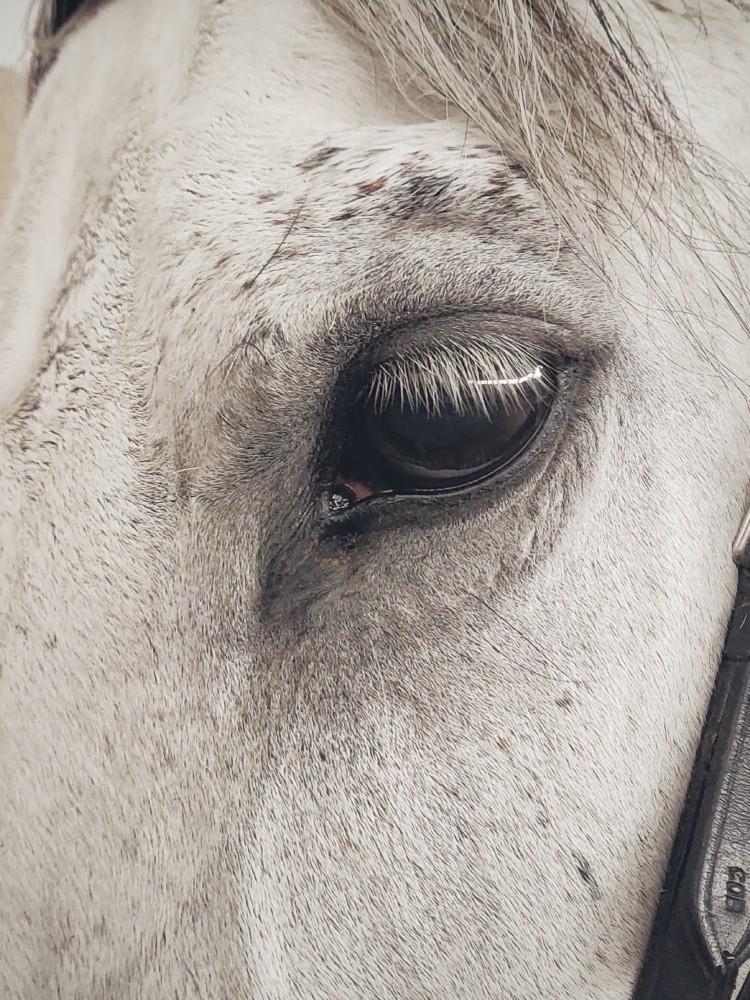Hope on Horseback
Equine-assisted therapy breaks new ground in the Fox Cities
 A common symptom of cerebral palsy is a lack of core strength, making it difficult for those diagnosed to balance when sitting. There are few activities and therapies showing fast progress in developing this strength. For the family of Daniel Thur, a 12-year-old diagnosed with cerebral palsy, it took many tries at different forms of therapies until they finally stumbled across equine therapy at BEAMING Inc. in Neenah, a therapy center that uses horses to treat physical and mental illnesses.
A common symptom of cerebral palsy is a lack of core strength, making it difficult for those diagnosed to balance when sitting. There are few activities and therapies showing fast progress in developing this strength. For the family of Daniel Thur, a 12-year-old diagnosed with cerebral palsy, it took many tries at different forms of therapies until they finally stumbled across equine therapy at BEAMING Inc. in Neenah, a therapy center that uses horses to treat physical and mental illnesses.
“When we first got to BEAMING with Daniel, he had almost no core strength and he would lean forward — so much so that he really was in risk of knocking out his front teeth on the saddle,” says Daniel’s father John Thur. Being a quick thinker, Katie Samuelson, director and riding instructor at BEAMING, put a boating life jacket on Daniel to keep him from falling forward. “After a couple of sessions, he was gradually developing balance and core strength and he was able to hold himself up,” says Daniel’s mother Jean Thur.
Equine-assisted therapy is a treatment that includes activities with horses (such as grooming, feeding, leading or riding) to help with physical, occupational and emotional growth. With five equine therapy organizations in or around the Fox Cities, residents struggling to gain results from traditional forms of one-on-one therapy are finding success through interactions with horses.
Prior to trying equine therapy, the Thurs had attempted standard physical therapy with Daniel as well as the Anat Baniel Method, a physical therapy that educates patients on how the body moves and trains them to be aware of these movements in order to improve. Although Daniel showed improvements from these therapies, they didn’t give him the quick, consistent results received from continuous sessions at BEAMING.
In addition to the development in Daniel’s core strength, over time equine therapy helped him to speak loudly and confidently, a speech development he struggled with beforehand. Samuelson connected the Thurs to an Equestrians with Disabilities (EWD) class where Daniel was trained to show horses for EWD competitions. Doing this required Daniel to build strength in his diaphragm in order to speak loudly enough to control and direct the horse he was leading. Daniel ranked 1st and 2nd in the two EWD competitions in which he participated.
Equine therapy not only helped Daniel develop physically, it also encouraged his family to become more involved with BEAMING. Since starting sessions, both of Daniel’s parents, as well as his older brother, Nick, have become certified equine therapy volunteers, trained to side walk with riders and lead the horses during the ride.
Equine-assisted activities and therapies (EAAT) offer an affordable alternative to one-on-one therapy and have shown, from stories like Daniel’s, significant progress in the wellness of its patients. The therapeutic benefits of horses have been noticed for as long as humans have been riding them, but when Liz Hartel of Denmark, who was partially paralyzed by polio, won the silver medal for dressage at the 1952 Helsinki Olympic games, the medical profession of EAAT started to take full notice. Shortly after the Olympics, therapeutic horse riding was used for rehabilitation in Germany and England, finding its way to North America in the 1960s. Equine therapy found its way into the Fox Cities in 2004 when BEAMING opened its doors in Neenah.
Equine therapy is beneficial for riders with both physical and mental special needs. “What the horses do is give participants a constant; something to look forward to every week,” says Marc Holm, owner and horse instructor at Meadowood Farm in Brillion. “It also helps with things like core strength and cognitive thinking and reasoning. We have found that kids who are nonverbal have become verbal, kids that would have violent temper tantrums at home have stopped, and we have seen that coming every week to take care of their horse has helped their attitude because they feel needed.“
Local equestrian therapy organizations serve people ages four and older. Common issues being treated with EAAT include Down syndrome, autism, cerebral palsy, stroke, spinal and head injuries, and blindness and hearing impairments, as well as mental illnesses such as substance abuse and addiction, behavior disorders, mood disorders, eating disorders, learning differences, ADD/ADHD, bipolar and depression. Riding a horse requires the rider to continuously contract and relax their muscles in order to balance themselves, improving strength, flexibility and balance. Mental disorders are treated through equine therapy by requiring riders to be disciplined, patient and to concentrate. The relationships built with horses create a stable niche in the life of their riders, helping to improve interpersonal relationships as well.
Each equine therapy session is based upon its patient and their current needs; however, the activities of each session are often similar to other sessions. Most sessions begin with horse grooming, where the patient cares for the horse by brushing and cleaning its fur. Not all equine therapy centers allow for horse riding but the biggest, most important part of the therapy is the relationship patients build with the horses. After grooming, the patient will either be helped on the horse to begin riding or take the reins of the horse to guide it if riding isn’t allowed at the equine center.
 In some sessions, patients will spend the entirety of their time brushing the horse because the constant motion eases their anxiety; in others, patients might spend their session riding the whole time if they are experienced and comfortable. Sometimes the centers will set up specific activities for the day such as an obstacle course that the horse must be guided through or games requiring volunteers and family members to think and act like a person diagnosed with autism, Down syndrome or cerebral palsy in order to put them in their shoes.
In some sessions, patients will spend the entirety of their time brushing the horse because the constant motion eases their anxiety; in others, patients might spend their session riding the whole time if they are experienced and comfortable. Sometimes the centers will set up specific activities for the day such as an obstacle course that the horse must be guided through or games requiring volunteers and family members to think and act like a person diagnosed with autism, Down syndrome or cerebral palsy in order to put them in their shoes.
For beginner Anthony Spoerl, a 22-year-old diagnosed with autism and post-traumatic stress disorder (PTSD), equine therapy at BEAMING has brought success and joy to his life from the first session. Two days before his initial riding session, Anthony was given a tour of BEAMING. “When Katie introduced all of the horses, each one stepped out of this stall when he came up and the one that she said never comes out, came out for him,” says Anthony’s mom Sara Spoerl. “And, just the look on my son’s face, he just had such a sweet smile that we hadn’t seen in years; he was so relaxed and he looked like he found his place.”
The smile stayed on Anthony’s face for the entirety of the riding session, he even volunteered to sweep up the barn afterwards. Anthony had participated in a long list of therapies before trying equine, from in-home therapy to sensory innovation and vision therapy, but with the triggers of his PTSD, these forms of therapy failed to bring him the quick success seen at BEAMING.
Appleton and the Fox Cities are home to five EAAT centers within a 25-mile radius: BEAMING in Neenah, Crossfire Ranch in Fremont, Meadowood Farm in Brillion and Rawhide with locations in Shiocton and New London. Each organization has its own unique specialties and forms of equine therapies. BEAMING is a Professional Association of Therapeutic Horsemanship International (PATH Intl.) certified center with an expertise in treating patients with more severe physical issues including Down syndrome, cerebral palsy and autism. Crossfire Ranch services patients with mental disorders like anxiety, depression and self-esteem issues. Meadowood Farm specializes in helping patients with physical issues, similar to BEAMING. Rawhide features eight licensed therapists between each of its locations, specializing in mental health therapy. All of the equine therapy done by Rawhide is conducted on the ground, not on the horse.
Each organization works to break the stigma associated with disabilities by refusing to identify patients by their issues. For example, Heidi Gossen, executive director of Crossfire Ranch, uses a spaghetti metaphor to help her patients express their emotions without feeling victimized.
“I don’t like to use words like ‘anxiety’ or ‘stress,’ but everybody has those butterfly feelings or knots in their stomach,” Gossen says. “So if you picture spaghetti, no sauce no meatballs, those noodles are just chill, but if they compress, they’re like those butterflies in your stomach. So, I ask the kids how is their spaghetti on a scale from one to ten.”
 Equine therapy reaches more than just its patients; volunteers, family members and local businesses are all impacted by the work done at these centers. For riding therapies, three volunteers are required to spot and support each rider. This calls for a need that can be difficult to reach; but the organizations promise the time volunteers dedicate is worth it. Volunteers are given the opportunity to lead, as well as build relationships with the horses which can also strengthen the relationship they have with themselves.
Equine therapy reaches more than just its patients; volunteers, family members and local businesses are all impacted by the work done at these centers. For riding therapies, three volunteers are required to spot and support each rider. This calls for a need that can be difficult to reach; but the organizations promise the time volunteers dedicate is worth it. Volunteers are given the opportunity to lead, as well as build relationships with the horses which can also strengthen the relationship they have with themselves.
Filling volunteer positions isn’t the only struggle EAAT centers face. Health insurance companies rarely reimburse equine therapy centers the full amount needed to provide their care. To compensate, organizations providing equine therapy look for funds from donors to pay the gap in expenses, requiring a constant hustle to fundraise in order to stay afloat. It’s for this reason that CHAPS, an equine therapy center established in 2007 in Shiocton that specialized in mental health treatment, closed its doors in January of 2018. Luckily, the community saw the need CHAPS provided and Rawhide, a counseling provider also specializing in mental health treatment, acquired the business shortly afterwards.
Angela Topolski, lead clinical therapist at Rawhide in New London, says the unique benefits offered by EAAT are vital for some patients.
“For some clients,” she says, “the horse is going to be able to bring the ability to work through things that they wouldn’t be able to work through in the office.”
For more information on how to become a volunteer or a donor at a local equine therapy center, visit the following websites:












Leave a Comment